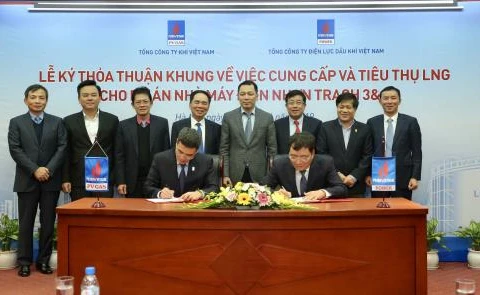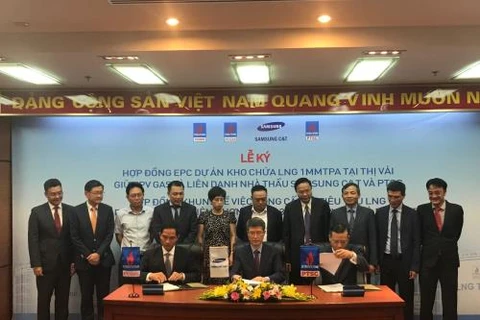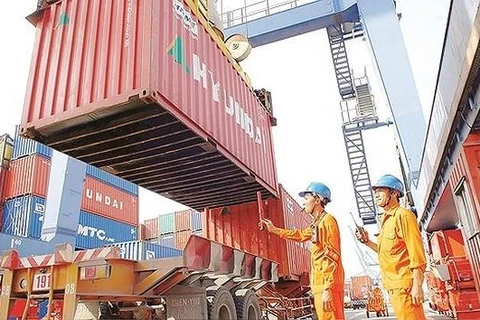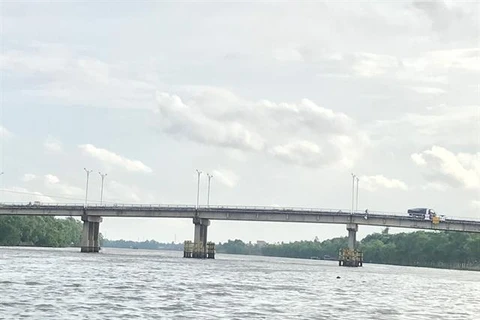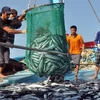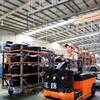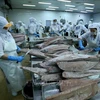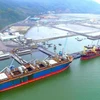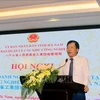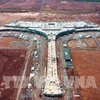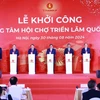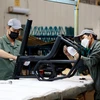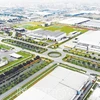Ba Ria – Vung Tau (VNA) – The state-owned oil and gas group PetroVietnam (PVN) and its member company, PetroVietnam Gas Corporation (PV Gas) started construction on a liquefied natural gas (LNG) warehouse at Thi Vai Terminal in the sourthern province of Ba Ria – Vung Tau on October 28.
Speaking at the groundbreaking ceremony, Vice Chairman of the National Assembly Uong Chu Luu said the Thi Vai LNG Terminal warehouse is significant for the PVN and its subsidiaries to realise goals set in Vietnam’s national energy development strategy.
The Thi Vai LNG and Nhon Trach gas power project chain includes the Thi Vai LNG Terminal warehouse and the Nhon Trach 3 and 4 gas-fired power plants, PV Gas Director General Duong Manh Son said.
The warehouse is designed to receive one million tonnes of LNG a year after the first phase is completed in 2022 at an estimated cost of about 285 million USD. Its capacity is expected to double in the second phase, which is scheduled to finish in 2023.
The warehouse will be capable of receiving LNG tankers with a tonnage of up to 85,000 DWT. After the first phase, it will consist of an LNG tank with a designed capacity of 180,000 cu.m and be capable of supplying extra 1.4 billion cu.m of gas to the Nhon Trach 3 and 4 gas-fired power plants and other industrial businesses.
The operation of the Thi Vai LNG warehouse and the two Nhon Trach power plants will help meet the growing gas and electricity demand in the southeastern region, Son said, adding that the two power plants will be the first in Vietnam using LNG.
He said Vietnam’s energy exploitation is mainly based on traditional natural sources such as hydropower, coal, oil and gas. However, hydroelectricity resources have almost been fully exploited. Therefore, the Vietnamese Government has mapped out policies to increase the use of clean and renewable energy for economic development, especially for power generation.
The minister added that in the national development plan of gas industry through 2025 with orientations to 2035, Vietnam needs to import LNG from 2022, and the demand for LNG will increase to about 5 million tonnes by 2025, 10 million tonnes by 2030, and 15 million tonnes by 2035.
To realise these goals, Vietnam is developing a system of LNG import terminals and relevant facilities. Moreover, Vietnam has been building and promulgating a legal framework to develop the LNG sector.
Also during the working visit to Japan to attend the conference, Minister Anh met with Minister of Economy, Trade and Industry Isshu Sugawara and Secretary-General of the Liberal Democratic Party (LDP) for the House of Councilors Hiroshige Seko.
At the meeting with Minister Sugawara, Anh said the Vietnamese Government and Ministry of Industry and Trade are particularly interested in developing LNG-fuelled power generation and will create favourable conditions for Japanese businesses to study and implement LNG investment projects in Vietnam.
He proposed Japan continue helping Vietnam to develop gas-fuelled power projects in the future, build regulations and policies to develop ports receiving and importing LNG, and develop human resources in the field.
In response, Sugawara said Japan will increase budgets to support human resources training in LNG business for countries, including Vietnam./.
